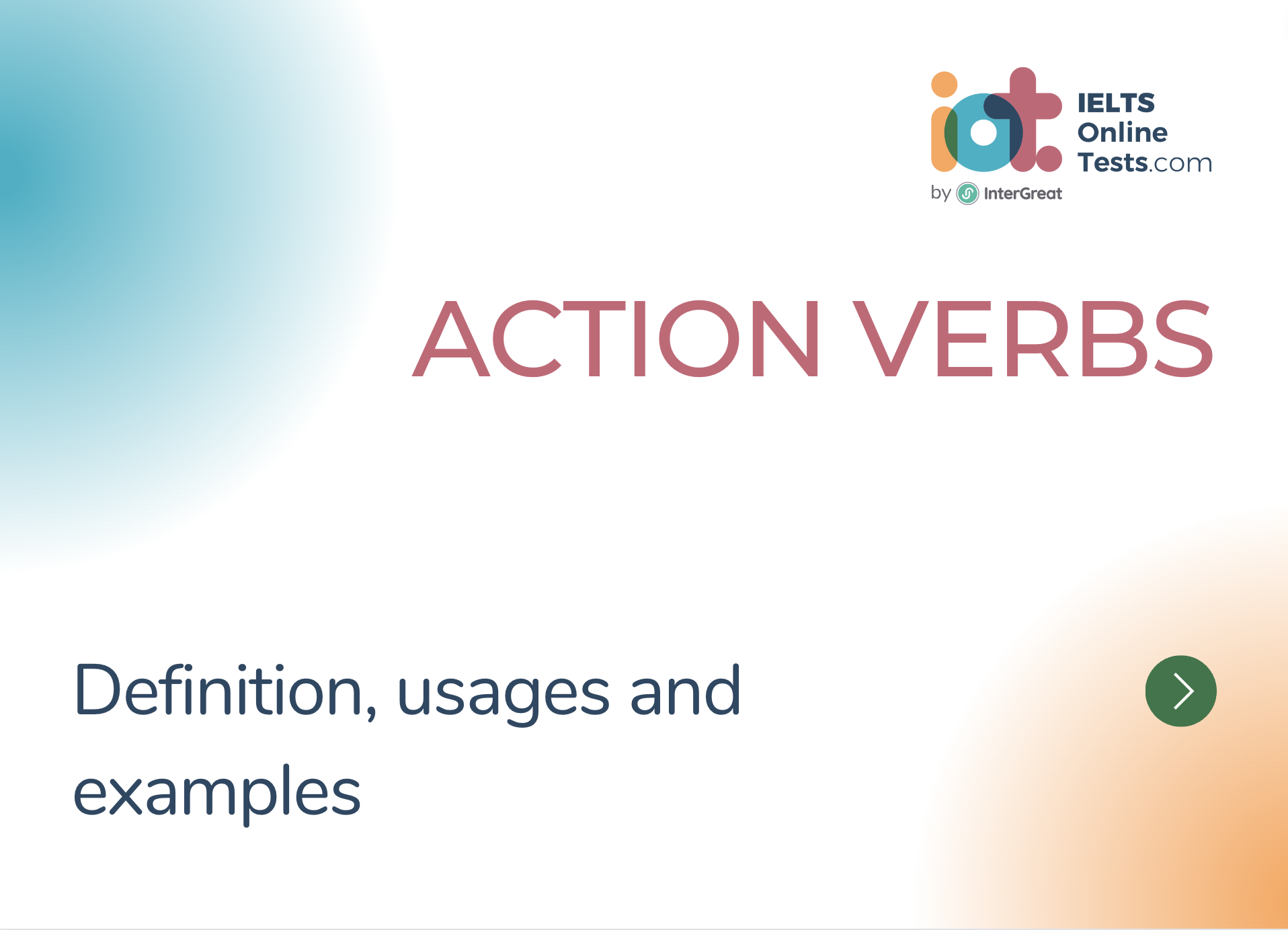
Action verb definition, types and examples
An action verb is a type of verb that expresses physical or mental action. It describes what the subject of a sentence is doing or experiencing.
Here's a detailed explanation of action verbs with additional examples:
- Transitive action verbs require a direct object to complete their meaning. The action is performed on the object.
- Example: "She ate an apple." (The verb "ate" describes the action of eating, and "an apple" is the direct object receiving the action.)
Additional examples of transitive action verbs:
- "He kicked the ball."
- "I read a book."
- "They built a house."
- "She wrote a letter."
- Intransitive action verbs do not require a direct object to complete their meaning. The action is not performed on an object.
- Example: "He sleeps peacefully." (The verb "sleeps" describes the action of sleeping, but there is no direct object involved.)
Additional examples of intransitive action verbs:
- "She ran quickly."
- "They laughed loudly."
- "He talks a lot."
- "The birds flew away."
Action verbs can be further categorized based on the type of action they represent:
- Physical action verbs describe actions that involve bodily movements or physical activities.
- Example: "He dances gracefully."
Additional examples of physical action verbs:
- "She runs daily."
- "They swim in the lake."
- "He jumps high."
- "I climb mountains."
- Mental action verbs describe actions related to thinking, perceiving, or feeling.
- Example: "She believes in herself."
Additional examples of mental action verbs:
- "He thinks deeply."
- "They remember the event."
- "She understands the concept."
- "I doubt his intentions."
Action verbs are essential for conveying dynamic actions and activities in sentences. They add energy and movement to the language, allowing us to express a wide range of physical and mental actions. Recognizing and using action verbs accurately helps in creating vivid and engaging descriptions and narratives.




